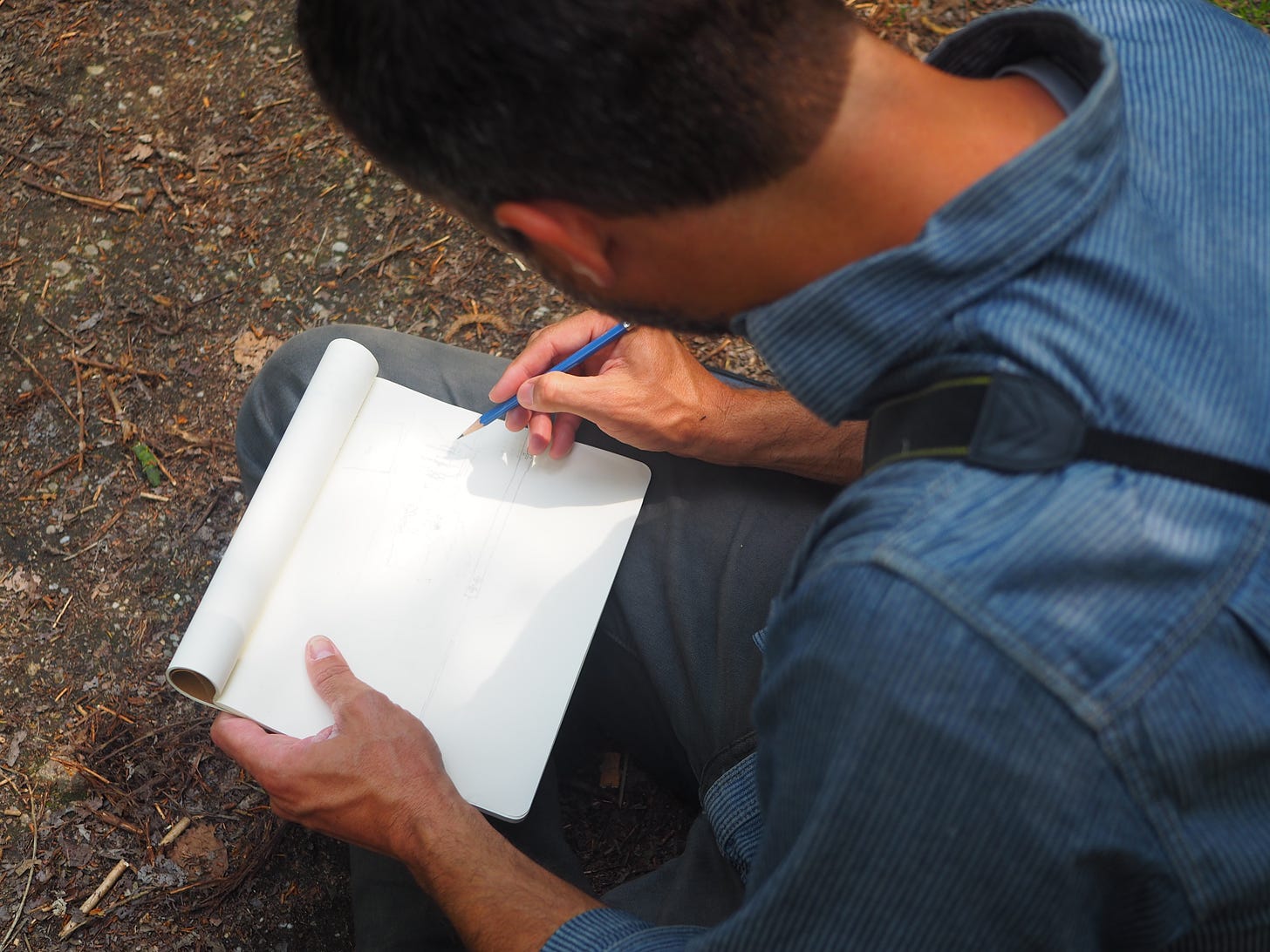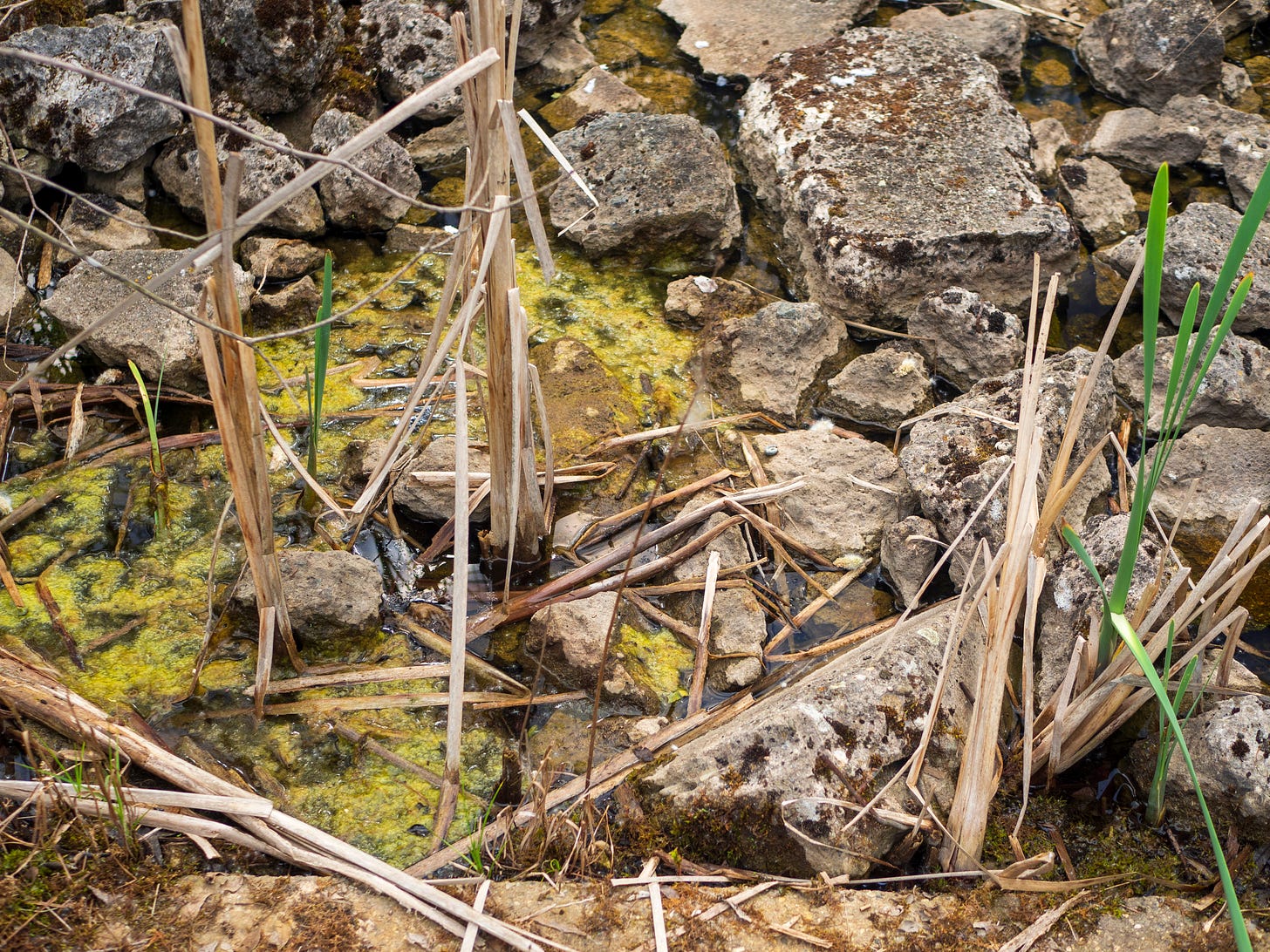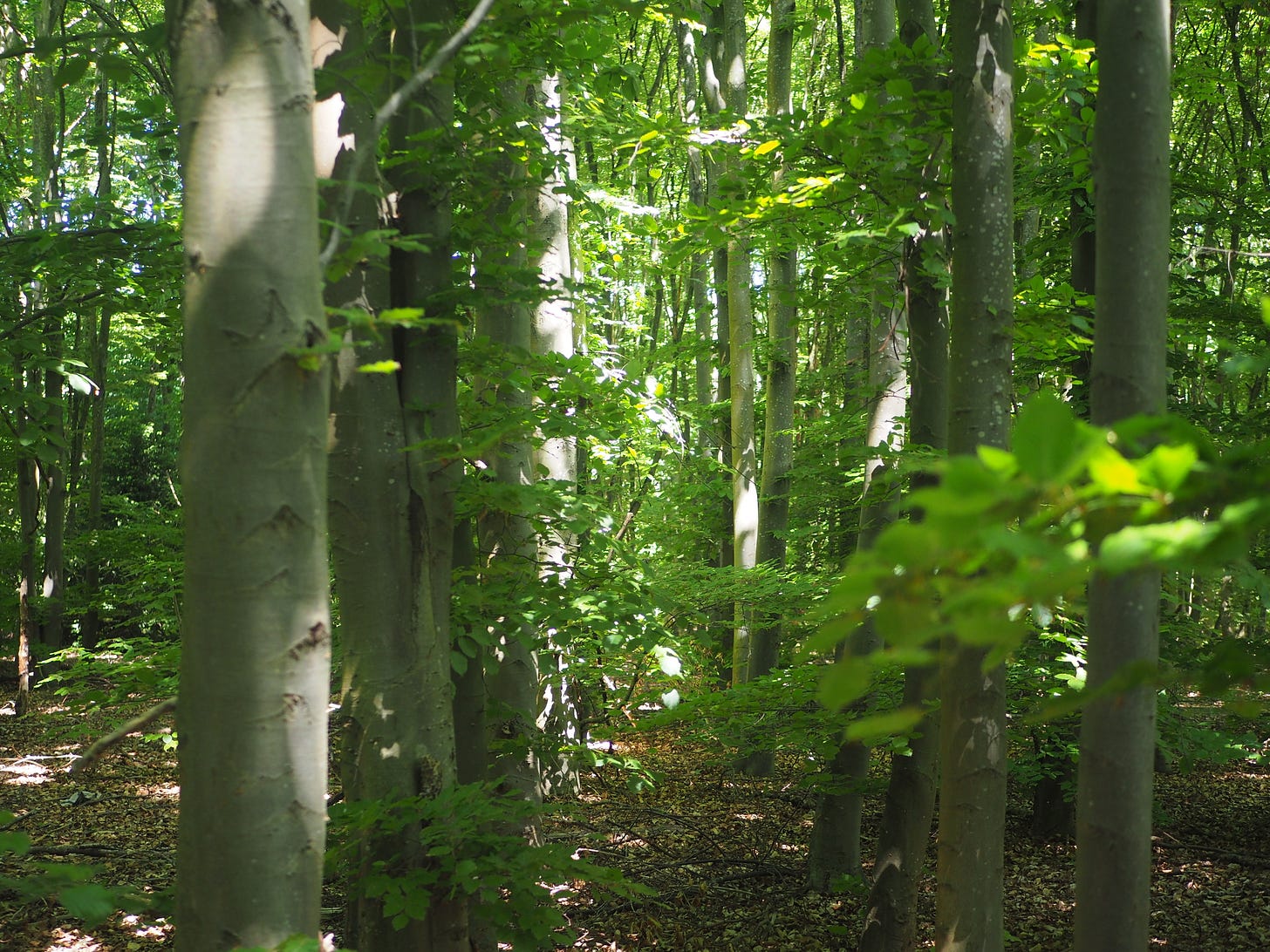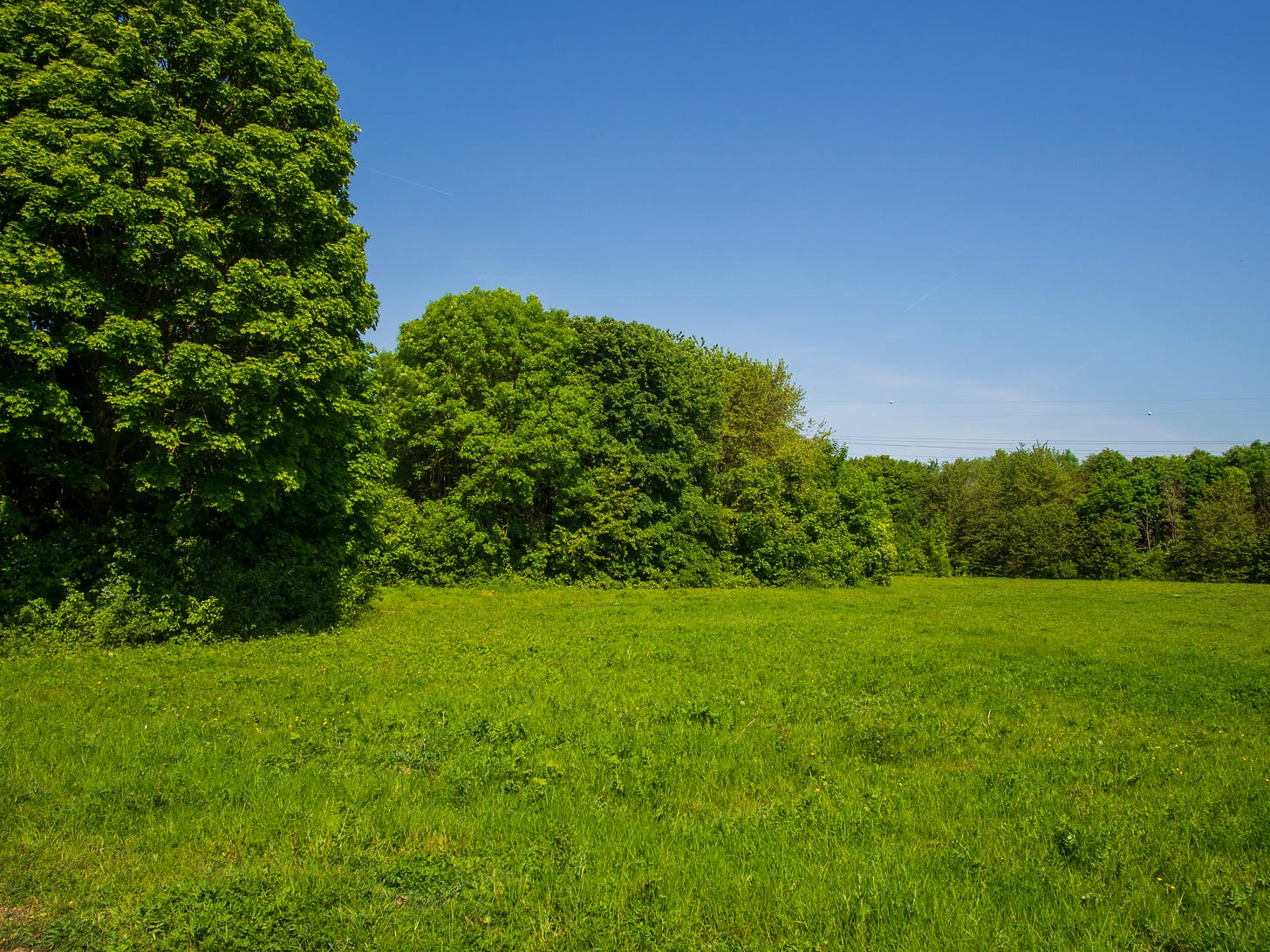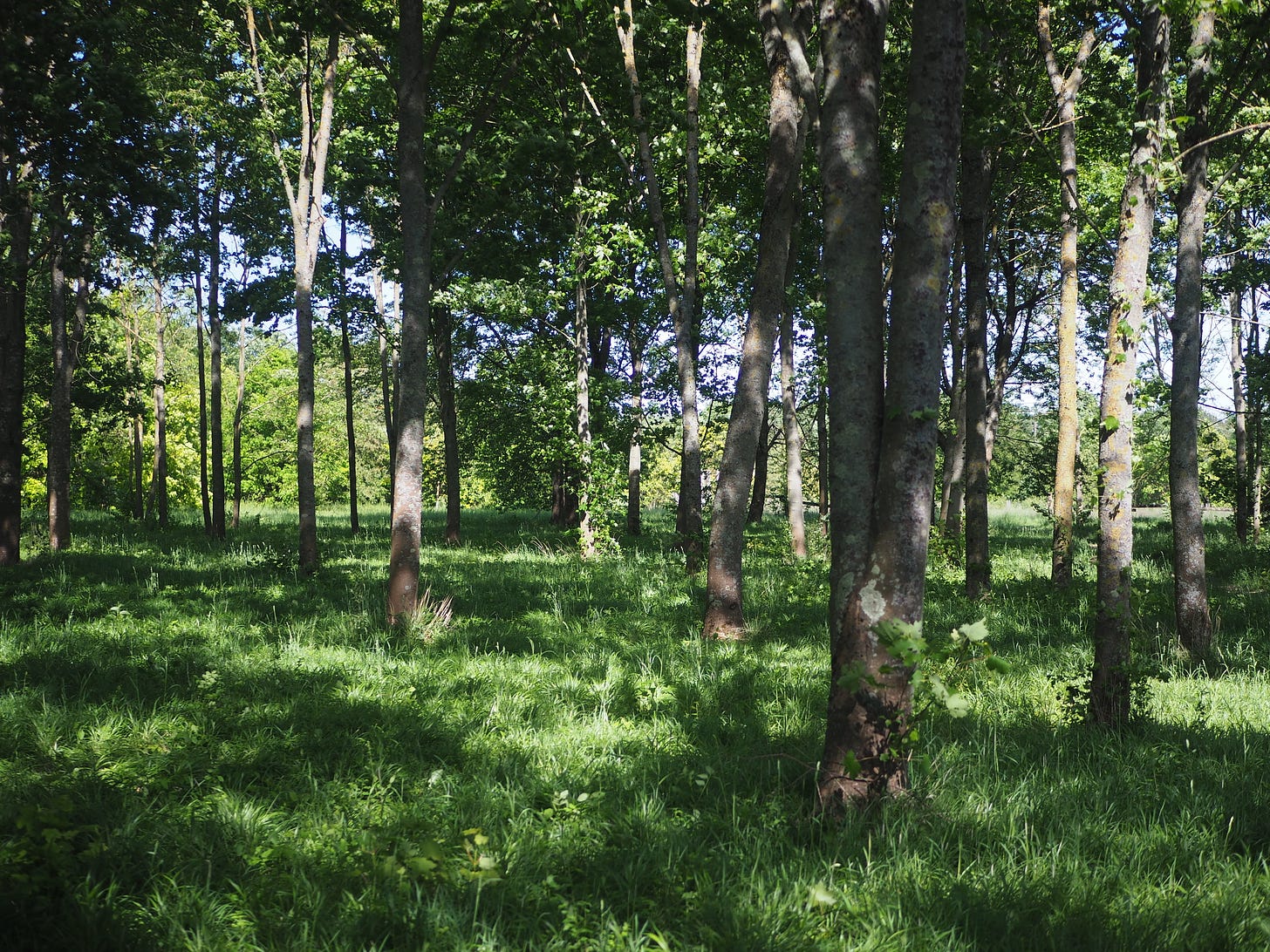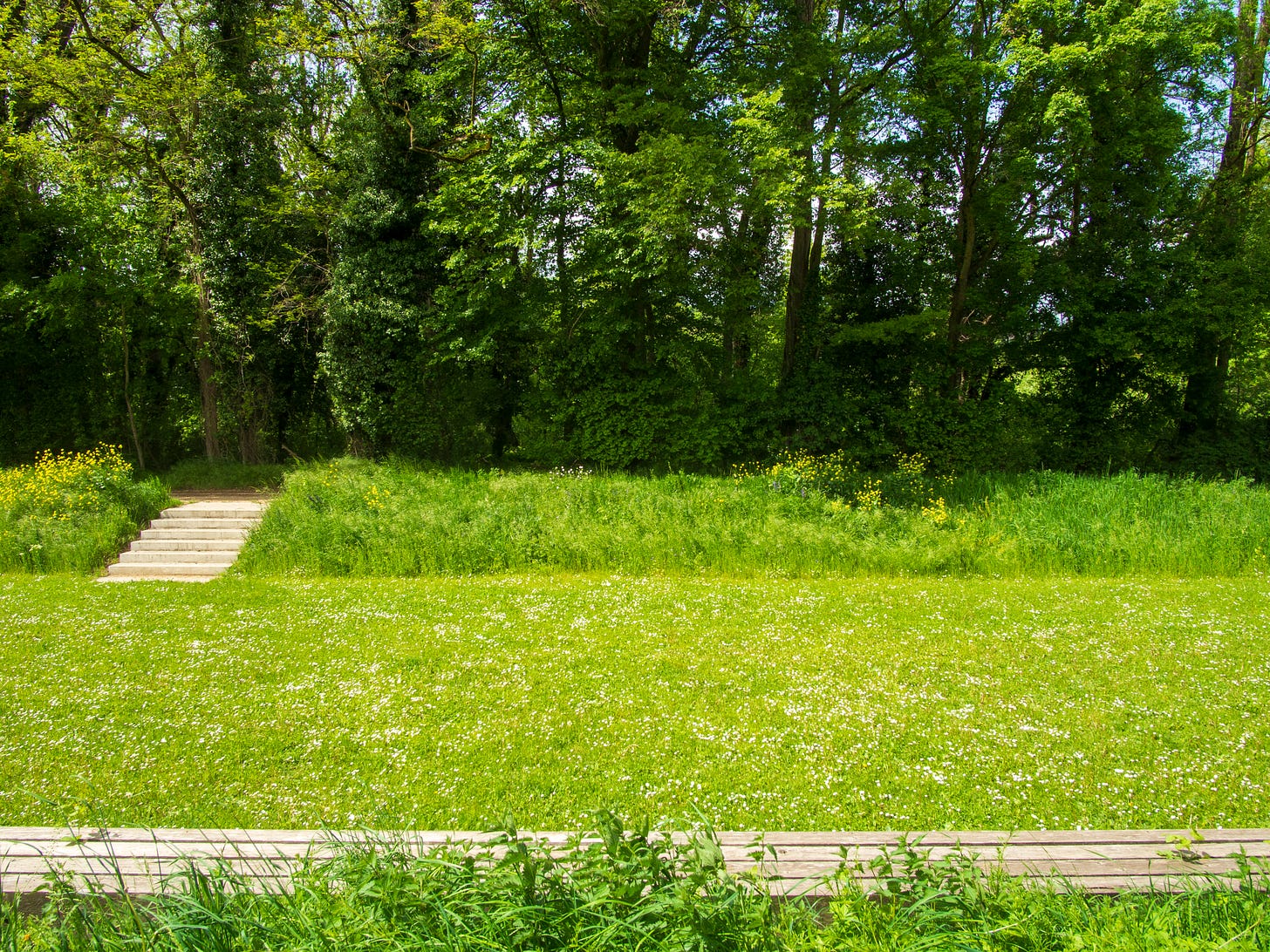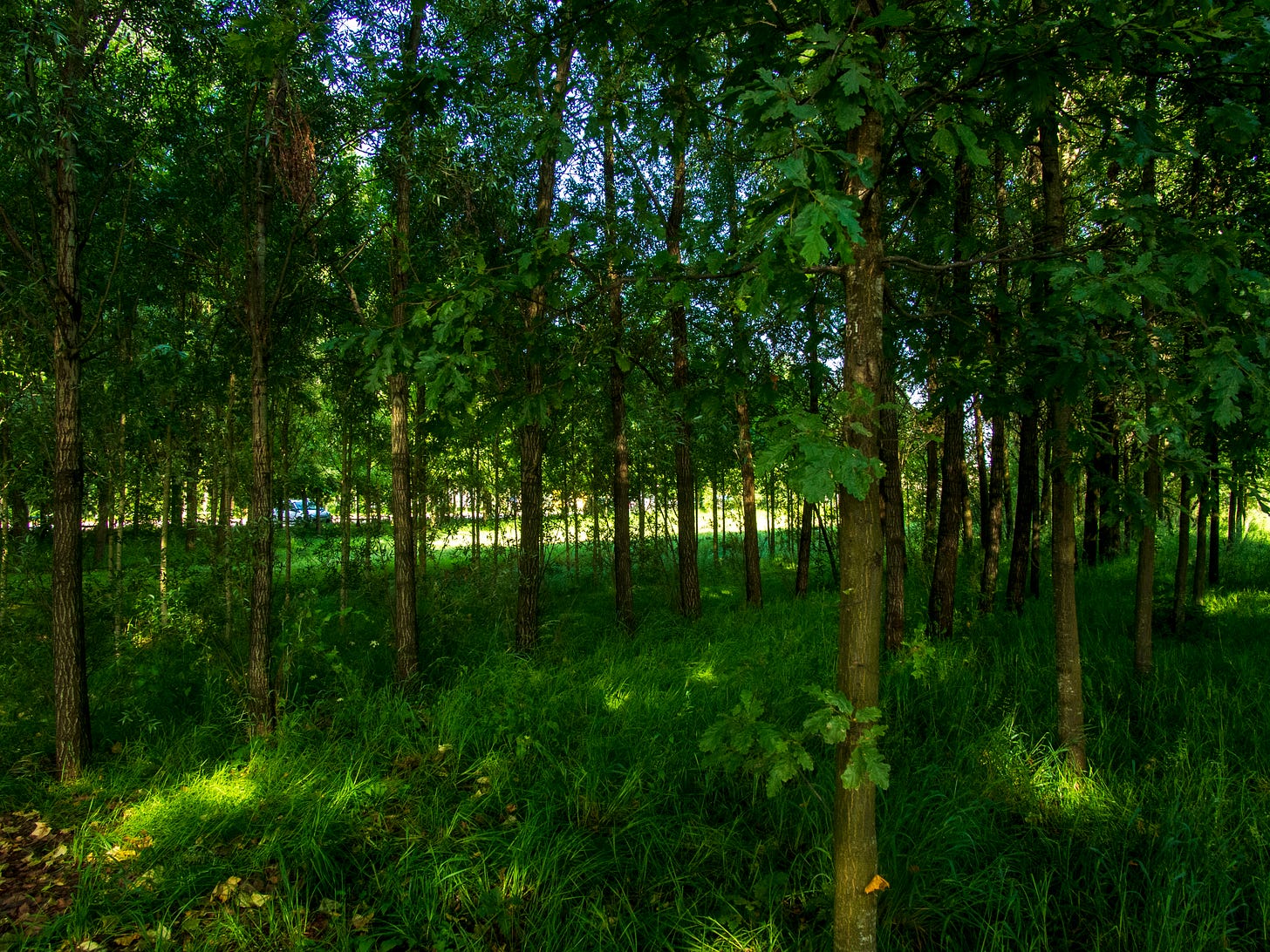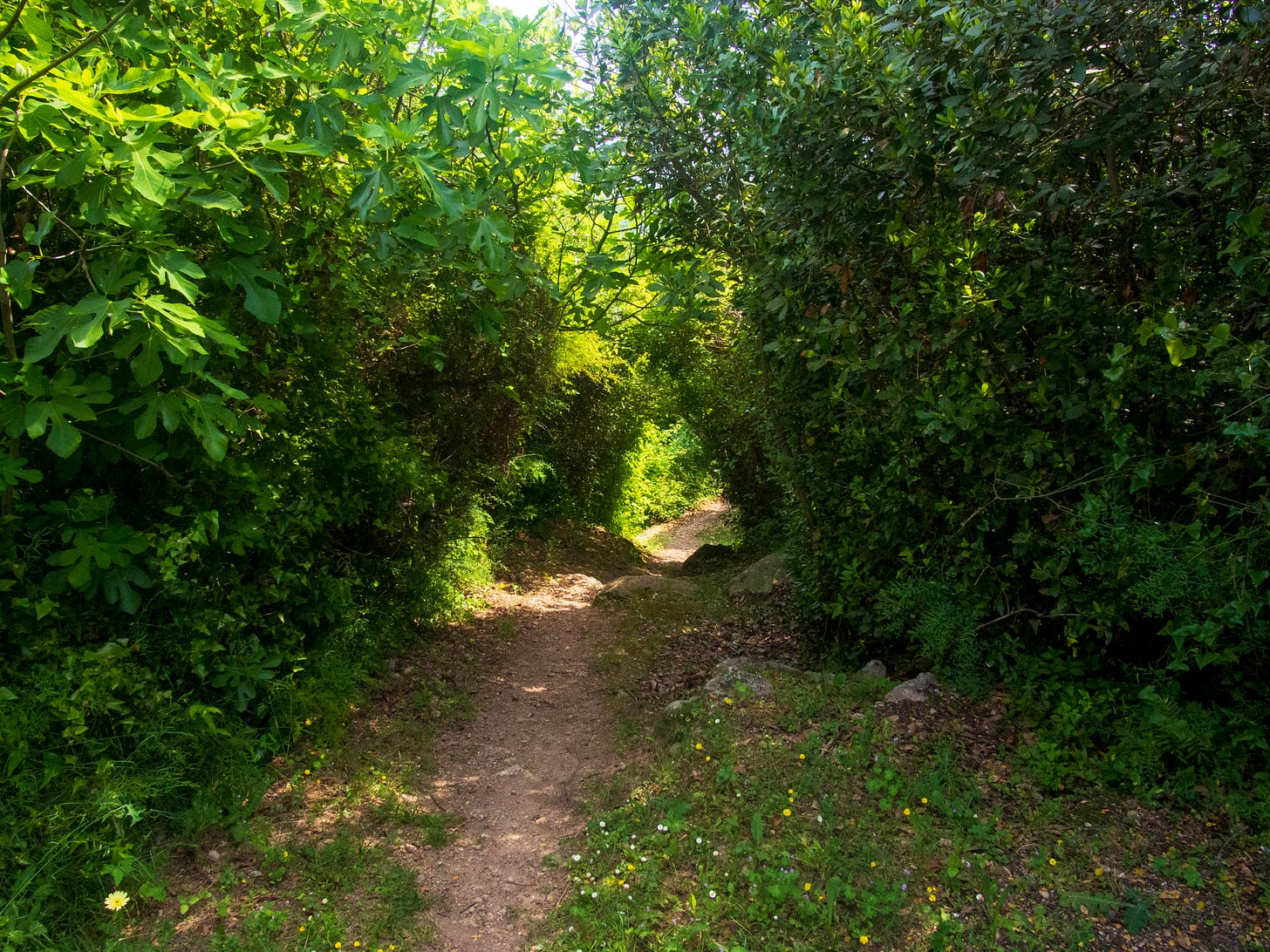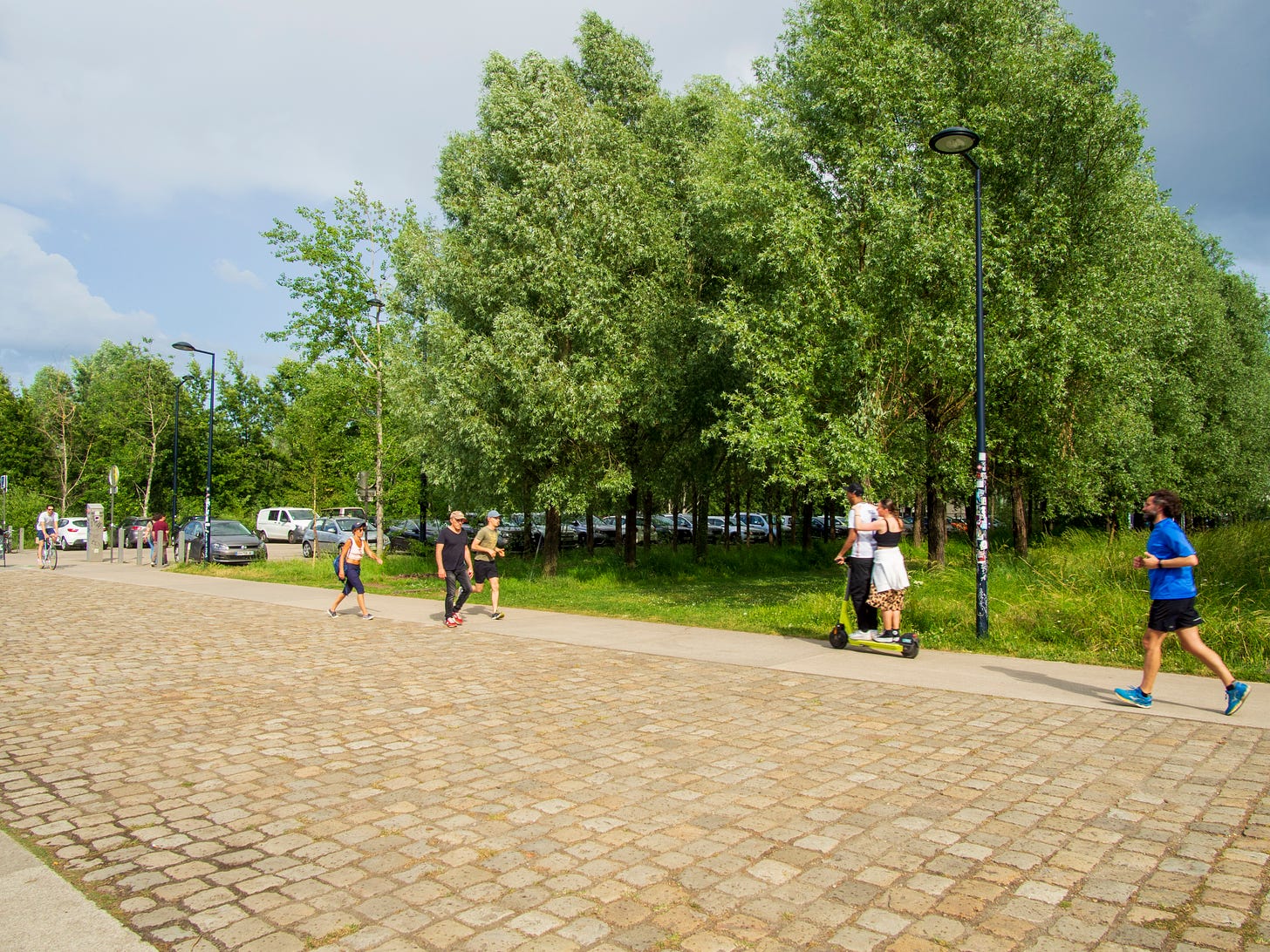Interpreting the Inscrutable
In search of "feral landscapes" with Rob Holmes and David Hill of Auburn University
“The feral is a band somewhere between the explorable and the openly hostile stops within that range—and for different people, those two ‘stops’ might register somewhere else.”
What constitutes a “feral landscape”? In spring 2022, Rob Holmes and David Hill, both associate professors of landscape architecture at Auburn University, toured nine salient “feral landscape” projects in western Europe, including Alter Flugplatz Frankfurt, Parc du Sausset, Parc aux Angéliques,Jardin des Joyeux, and the Girona Shores.
Sarah interviewed Rob Holmes in the midst of the tour.
SC: How do you define feral landscapes?
RH: We have an interest in the feral from our work in Alabama, a fecund place where vegetation is constantly growing. At this point we are trying to chase both a sensibility and the methods employed to build and manage these landscapes. The sensibility is about an aesthetics of release, of the designer stepping away from control.
These methods overlap with many other ideas people are developing, about maintenance and management, curation of landscapes, or the ruderal in general. As we walked through each project on this tour, we’ve been asking why this is feral to us.
SC: We’ve seen many of these projects in publications and online. What parts of projects surprised you when you visited them in person?
RH: For example, at Alter Flugplatz Frankfurt, (GTL Landschaftsarchitekten, built 2002 – 2004 ) there’s a clear series of initial actions: cutting up the concrete and asphalt and stacking or scattering it. I prefer the area that is at the edge of a pond, where beavers appear to have lifted the water level. The designers laid concrete at various levels, bigger and smaller—it’s delightful. This method forms a gradient of microhabitats, where it starts as a clear pond, and suddenly there are concrete gaps where you find wetland plants like cattails. This rhythm proceeds within a consistent field of concrete slabs and continues up the shallow slope. The gradient is really interesting across the whole zone, and then there are other gradients nested within. The method is about making some initial actions, then plants and beavers turn that into a diverse and exciting series of landscapes and habitats.
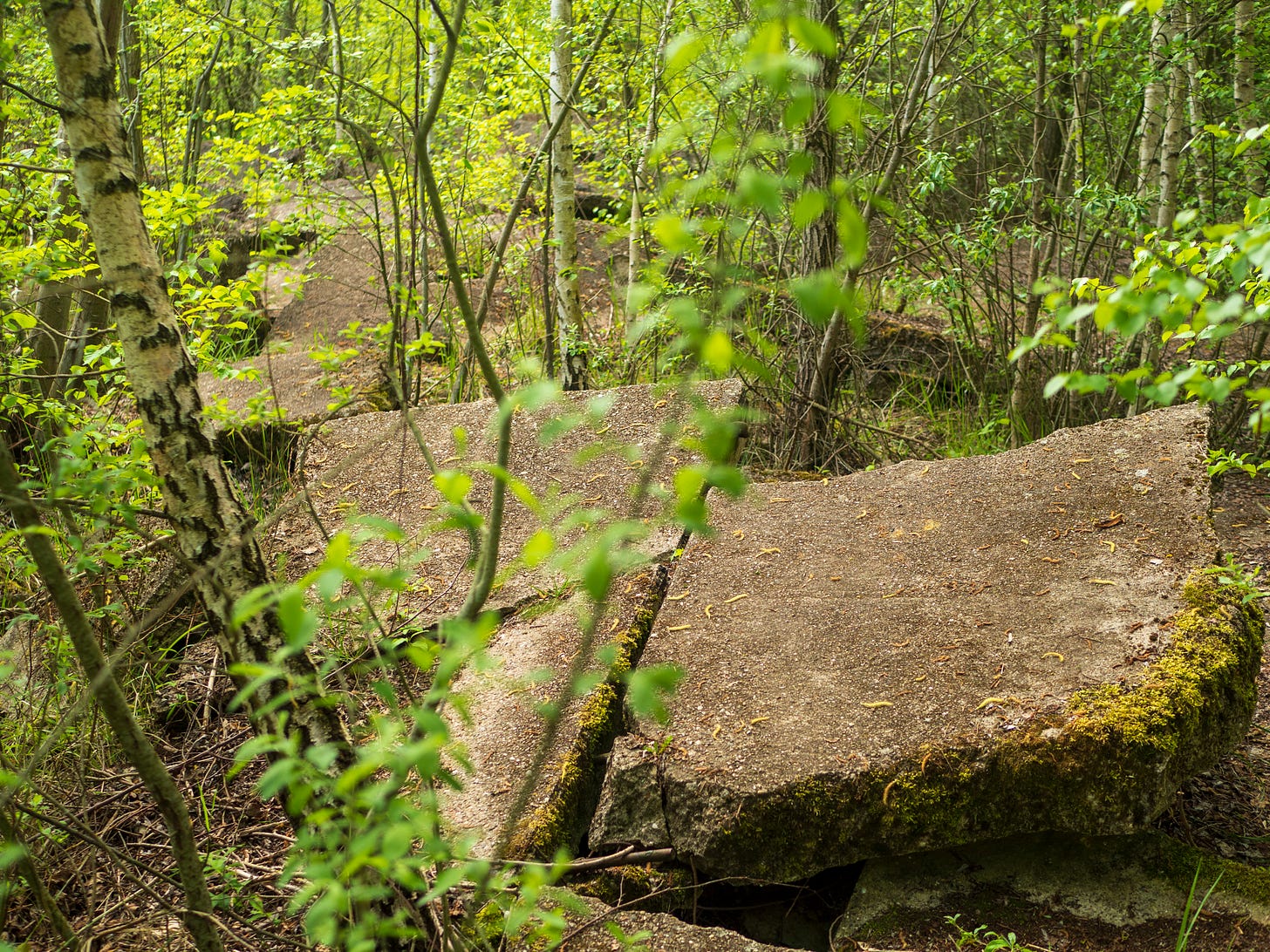
Rather than make discrete rooms, the landscape is constructed in blurs and gradations. For us, that makes that landscape feral. For example, you don't know that you are following an edge, it is only looking back that you realize that there is a gradient of wetness.
The project was particularly surprising to visit because the diversity and evolution of the spaces are not very well documented, at least in what we found. We noticed there are many subtle but clear grading strategies, like the rectangular basins and clear topographic shelves in the wilder parts of the park.
Parc du Sausset (Atelier Corajoud, 1981) in Paris is feral in a different way. It has a large gradient from “cultured” to feral within itself. The southwestern quadrant is like an extensive French Garden, a kind of Versailles. It’s fantastic and maintained and continues to evolve over 40 years. People are going about the normal park activities like picnicking and sunbathing But I wouldn't say it is very feral in that area. The northern portion, the forest, the part that gets pretty feral, is what excited us. That area isn’t just about Claire and Michel [Corajoud]—a lot of people have participated in shaping that landscape.
There are some blocks that are unmanaged, and others are managed in prescribed ways, like thinning or coppicing. Those differences exhibit a range of approaches to allowing landscapes to take their own direction. If you compare the pre-park landscape—an agricultural area that was intensively controlled—now there are fox dens, vernal pools, dense thickets, and spots where the understory gets really unmanageable with rubus, etc.
SC: Designers often include armatures or datums in feral landscapes to register or guide successional or material processes. Can you describe some effective examples of this tactic?
RH: Renaturation of the River Aire (Atelier Descombes Rampini/Superpositions, 2015) has a different scale and process than the others. There, the initial action is excavating the lozenge pattern and diverting water into it. That isn’t much different from many river restoration processes, where water and soil are provided opportunities to shape the landscape.
The riverside and canalside of the project are each great in their own way. Within the new space of the river, you can discover moments of clear continued action—it is clear that they did more than just excavate the channel and step back. Someone—the designers, or the municipality—is directing things as they evolve. For example, near the confluence of the river and the canal, there are stands of volunteer trees, where the middle third is cut down, to make a visual link from the trail to the river. Deeper within the lozenge field, there are actions that are not super visible at a distance. They are cutting back vegetation and continuing to plant, so the environment is not completely wild, but one where there is continued action and engagement—a back and forth.
SC: You describe the multiple time-scales of these projects. That hints at an evolution from the “Messy Ecosystems, Orderly Frames”1 position to something more like “Messy Frames, Orderly Ecosystems”, where the order of the “ferality” - the textures of a plant community, its gradients, etc are legible.
RH: Yes. There's something about scale that makes order within the feral perceptible, in a way that maybe moves beyond the orderly/messy binary, at least as it is usually presented. In these projects it’s not as simplistic as there’s this straight thing, and here's the thing that's all over the place. At the right scale, a coherent “room” can have both, overlapping and merging into one another.
“There's something about scale that makes order within the feral perceptible, in a way that maybe moves beyond the orderly/messy binary, at least as it is usually presented.”
At L’Aire, it takes some time and effort to perceive the order within the behaviors and patterns of the river as it reshapes the cut lozenges. But it is there if you look for it, if you walk the length and get down into the lozenge field repeatedly so that you can see where the river incised deeply and where it has broadened out. If you look, you can start to pick out pools and runs. Or, at Parc du Sausset, it takes time to see that most forest blocks have both an interior and an exterior.
This scale is about mass planting too - if you plant 400 trees in a block, a difference emerges that is perceptible. You can see a transition from beech to coppiced hornbeam, you can see which trees are surviving versus growing weak and sickly. Or, in Parc aux Angeliques (Michel Desvigne and Christine Dalnoky, 2012) , you can also perceive this kind of difference in form. Though it traces a long arc along the right bank of the river in Bordeaux, it has less area, and smaller areas, given over to feral change than Parc du Sausset or the River Aire. Yet the project is successful in building legible gradients, particularly as it moves north and east and it gets thicker as a band between river and city. Walking from the southern end of the arc, there were moments where the rooms were a bit thin and not substantial, sometimes just marked with a mown line. As you move to the northeast, the lines become more legible, formed by 8-12 rows of trees on both sides. Along the lines of trees, you have variability in terms of spacing; the repeated device of the line makes that variability legible—when the spacing of a line shifts, you can read that because you have other lines right there to compare it with.
Another element of the projects was an experiential range, between the thing that's kind of prescribed, to the thing that's explorable, to that which is actively hostile to exploration. The feral is a band somewhere between the explorable and the openly hostile stops within that range-and for different people, those two “stops” might register somewhere else.
That band is something that David and I treasure about Alabama, some of our landscapes can be a little tough to get into, but moving through brings rewards, discovery, and delight. You don’t get this from walking along the River Aire canal path–it’s manicured and unfolds with very little effort–but you do find it in the margins of the canal and in the space of the river, where sometimes you’re on a designed path, and sometimes you’re just walking a desire line. It takes effort to make your way through those feral places, but you’re rewarded with surprise and discovery, with experiences that just aren’t available in a more controlled landscape. This is one of the things that we’re after, that is central to the project of feral aesthetics for us, which is to make room for those kinds of experiences to happen in public landscapes. We want to share the value we find in them and the delight that we take in the process of exploring them.
Holmes and Hill are developing this research for publication and exhibition in the near future. You can follow their work at @hillworksdesign (Instagram, David) and @rbhlms (Twitter, Rob).
Auburn University offers degree programs in landscape architecture. Auburn’s programs include extended field trips to major works of landscape architecture and urban design, and place a heavy emphasis on fieldwork at sites like Auburn’s Mary Olive Thomas demonstration forest.”
This interview was edited for clarity.
Photos by Rob Holmes.
Nassauer, Joan Iverson. “Messy Ecosystems, Orderly Frames.” Landscape Journal 14, no. 2 (1995): 161–70. http://www.jstor.org/stable/43324192.






